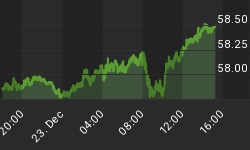JP Morgan Asset Management put out their Q3 2014 market outlook in which they discuss bond performance in a rising rate market. You should be aware of the key points they make.
In this table, JPM explains how a +/- 1% interest rate change would impact each of several types of bonds:

You can see that longer maturities have the greatest price reaction to rate changes; that floating rate loans have the lowest reaction to rate changes; and that the bond market in the aggregate has a roughly +/- 5.6% price sensitivity to a +/- 1% interest rate change. The average duration of that universe of bonds is about 5.6 years.
High yield bonds are bit less sensitive to rate changes than the aggregate bond index, and muni bonds are a bit more sensitive.
In the broadest sense, intermediate-term bonds might have a 1% upward rate change risk over the next year or two, while very short-term bonds might have a 1% to 2% upward rate change risk. Nobody really knows for sure.
This chart of the Treasury yield curve at different times may help with a feel for the potential rate changes.

Bottom line for us is that bonds have much more price risk than in the past few decades, because the long-term path of rates is likely up, as opposed to the long decline in rates from the early 1980s to the current era.
This chart shows you the downward yield path over 30+ years for 3-mo, 2-yr, 10-yr and 30-yr Treasuries.

Those days are behind us, and a rise in rates and declines in issued bond prices are eventually in store.















